I think Europe will always be one of my favorite places to visit in the world. It has that old-world charm, with a modern touch especially in cities, and the food is really worth the trip. I am particularly biased towards Italy because I love pizza, pasta, and gelato, which is evident in a lot of recipes that I have shared here on the site.
I’ve visited Italy on several occasions, but the most memorable would be the time when I was hosted by a lovely family in Siena: The Vanuccis (My eye twitched when I added “s”, as the “i” at the end of their surname denotes a plural form already, but let’s save my language lessons for another post!)
Anyone here who’s ever been to Italy? Tell me about your favorite spots or food in the comments below ☺
- Thickening Pasta Sauce Like The Vanuccis
- How To Make Spaghetti Sauce Thicker?
- Thickening Pasta Sauce Like A Pro
- Reducing Spaghetti Sauce Like A Pro: Two Methods That I Always Use
- How Do You Make Spaghetti Sauce Not Watery?
- FAQS
- Why Is My Spaghetti Sauce Watery?
- Can I Add Flour To Thicken Spaghetti Sauce?
- Does Spaghetti Sauce Need to Be Thick?
- How Do You Make Spaghetti Sauce From Scratch?
- What Is The Secret Ingredient In Spaghetti Sauce?
- How Do You Thicken Sauce In A Slow Cooker?
- How Long Should Spaghetti Sauce Cool Before Putting In Fridge?
- How Long Should Spaghetti Sauce Simmer?
- Can You Simmer Spaghetti Sauce Too Long?
- Can You Overcook Spaghetti Sauce?
- How to Thicken Tomato Sauce
- Too Watery Tomato Sauce: Follow This Video
- Best Slow Cooker Spaghetti Sauce
Thickening Pasta Sauce Like The Vanuccis
In the Vanucci household, everything was prepared at home. No fast food! It’s no wonder Italians have one of the oldest, healthiest folks around. I learned a lot of tricks from them in cooking my favorite Italian dishes. In particular, how to make pasta sauce fully thicken and cling to the pasta.
- When preparing the sauce, leave it to simmer. (Leave. The Pot. Alone.) After giving it a good mix, put the ladle down, and walk away. I know a lot of us feel the urge to keep mixing. Stop yourself from doing so! Let it simmer so the excess liquid will evaporate and reduce the sauce to a great consistency.
- The pot that you will use in cooking your sauce should be big enough to toss the pasta in later.
- How you prepare your pasta or noodles is also key. Cook the pasta a minute less than what is indicated on packaging for that perfect al dente.
- Once your pasta is cooked, drain the water, but do NOT rinse the noodles. Keep them hot.
- When the sauce is ready, do not remove the pan from heat. Keep it on your cooktop but lower the temperature a bit. Transfer your hot pasta or noodles right into the pot of sauce, and toss. This ensures that your sauce covers and fully clings to the pasta.
Has anyone ever tried this technique? This greatly changed the way I prepare pasta. Before, what I would do was rinse the pasta with cold water, and set it aside. Then, I would heat my prepared sauce, pour it onto the pasta, and toss them in the bowl. The sauce didn’t cling as much. After my stint with the Vanuccis, my way of mixing the sauce and pasta has changed.
If, however, you still would like to do the mixing of pasta and sauce on your counter top in a big bowl, you can still definitely do that! The key is having a thick sauce, and well-drained pasta. Remember, since you are tossing without the presence of heat, any excess water from your pasta or sauce will not evaporate anymore.
How To Make Spaghetti Sauce Thicker?
Are you looking for more ways how to thicken spaghetti sauce? Last time, I taught you some of my tips on how to thicken tomato sauce and it’s pretty similar with some tweaks.
The traditional marinara spaghetti sauce is a bit thin and thus your meal might not look as mouth-watering as you want it to be.
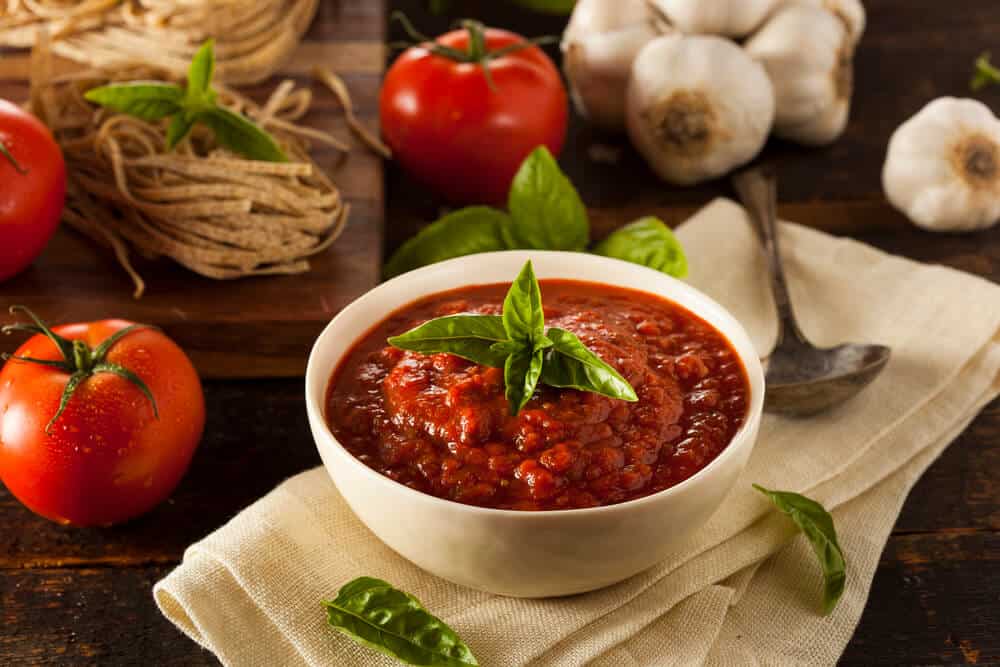
Luckily, there are a few tricks to use that will make your favorite spaghetti sauce thicker and tastier. No worries, they don’t involve the usage of tomato paste.
First, watch this video to learn how to make pasta sauce thicker. I listed below more tips on how to do it as well.
Thickening Pasta Sauce Like A Pro
There are multiple ways you can make your spaghetti sauce thicker than it is. The most common option is adding tomato paste. You can also use starch like flour, cornstarch, or roux. Or add some mashed potatoes or arrowroot.
My go-to way of fixing a watery spaghetti sauce is to let it reduce by cooking it a little more. Turn the stove to low heat and take the lid off the saucepan. Then I let the sauce reduce for 15 to 20 more minutes or until I get the consistency that I’m aiming for.
During this time, I would make sure to keep stirring it so that the sauce doesn’t stick to the bottom of the pan and burn. I love this method because it doesn’t alter the taste of the sauce since I’m not adding any ingredients. All it does is evaporate the extra liquid that’s in it. However, if the sauce is too watery, simmering it will not be enough.
Here are my other trustworthy hacks:
1. Simmer It
This is an old trick used to thicken the marinara sauce, but you can actually thicken any sauce this way. No additional ingredients are required.

All you should do is let the liquid evaporate by simmering your sauce over low heat for 3 to 5 minutes, depending on the amount. If your sauce is very thin, bring it to a boil and then simmer for 10 minutes until it becomes thicker.
- Automated Blending: Five pre-programmed settings ensure simple cleaning, walk-away convenience, and consistent results for...
- You're in Control: Variable Speed Control and Pulse feature let you manually fine-tune the texture of any recipe;Cord: 6 ft
- Low-Profile 64-ounce Container: Perfect for family meals and entertaining, while fitting comfortably under most kitchen...
Last update on 2025-11-13 / Affiliate links / Images from Amazon Product Advertising API
Remove from the heat, grab your blender and blend it until smooth. You’ll get an absolutely different sauce for your spaghetti.
2. Add Mashed Vegetables
This is my go-to step. Read below for more explanation on how I do it. Mashed potatoes, celery roots, kabocha, cauliflower, or even mashed butternut squash can instantly thicken your spaghetti sauce.
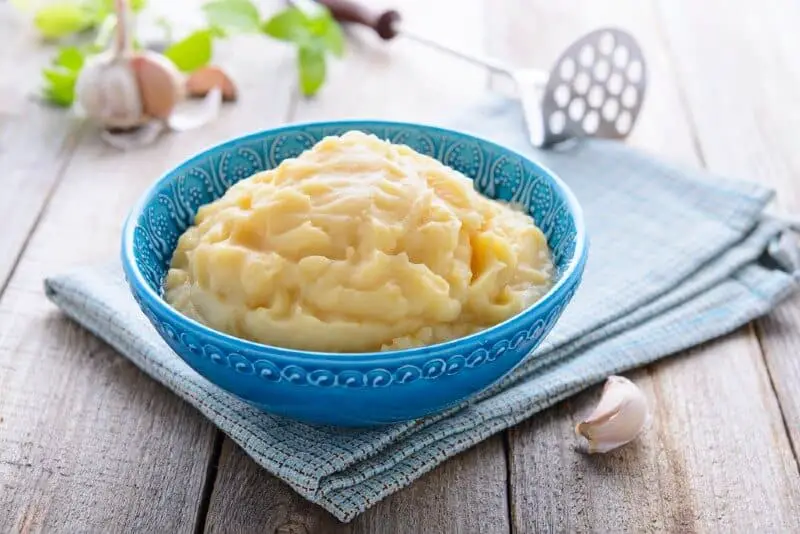
Of course, you don’t want to overdo it. A spoon or two of it will do the trick. Mashed potatoes are a better option as it’s packed with starch, albeit any mashed vegetable can add an additional flavor to your meal.
You can add different mashed vegetables to your spaghetti sauce, jazzing up your dinner daily. Consider blending your sauce to make it smoother.
3. Add Cornstarch
Many people add flour to sauces in order to thicken them, but all-purpose flour can ruin the taste and texture of the sauce. Cornstarch has a neutral flavor and it’s easy to stir it in a pre-made sauce.
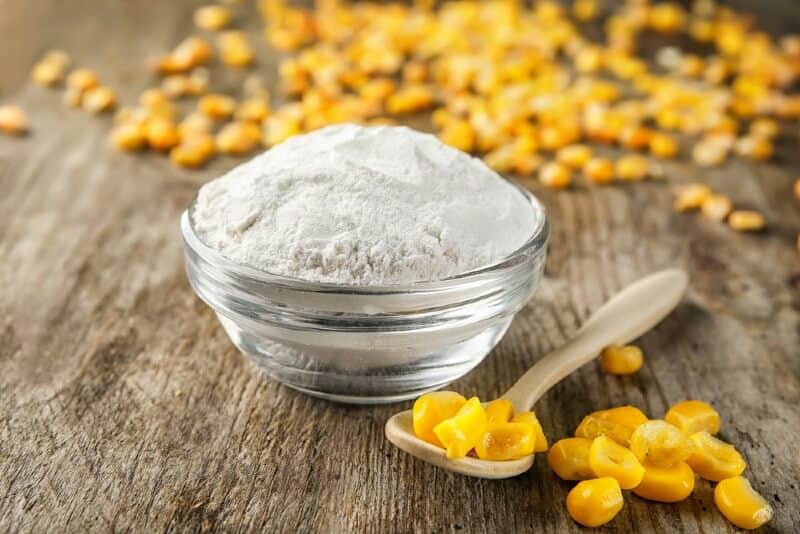
Unlike a roux that people often make and add to sauces, you don’t need to combine cornstarch with anything. Just add a tiny amount of cornstarch to your sauce and allow it to simmer for a minute or so until it thickens.
Avoid adding too much cornstarch as you can ruin your sauce texture.
4. Use A Roux
The combination of butter and flour cooked for a few minutes makes an ideal sauce thickener. A roux might take a bit of time and effort to make, but it really works.
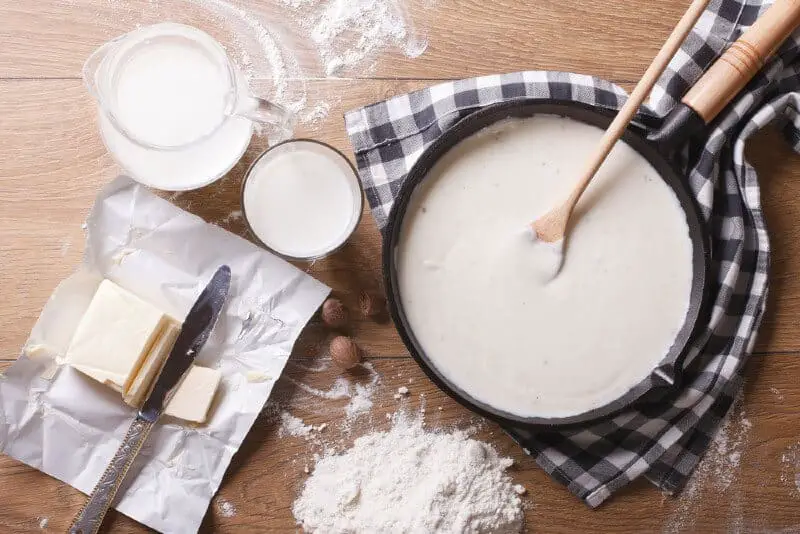
Take equal parts of flour and butter. Add the butter to a frying pan and melt it over medium heat for a minute. Then, stir in a little bit of all-purpose flour, mix well until you get a smooth texture.
Whisk or blend your roux until you get the thick, creamy sauce. If you’re watching your cholesterol level or you have weight issues, it’s better to skip this recipe.
5. Add An Egg Yolk
As strange as it sounds, adding an egg yolk to your spaghetti sauce won’t only thicken it, but will also make your spaghetti taste in a different way. Egg yolks are typically used to thicken cream sauces or salad dressings, yet many people start adding them to spaghetti sauces, as well.
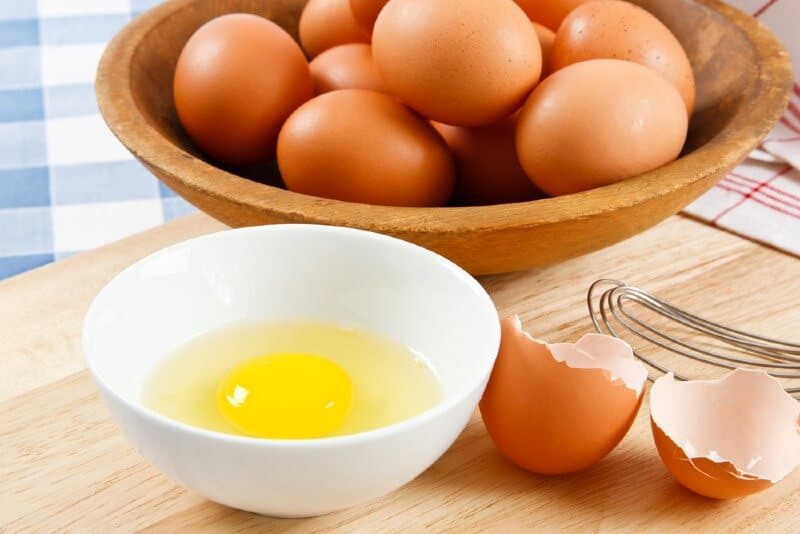
Since eggs tend to scramble when you add it to hot meals and water, it’s important to be careful as you add it to your sauce. Add 1/2 cup of hot sauce to a mixing bowl and slowly whisk in one egg yolk.
Whisk for a minute until you get a smooth mixture. Add it to your spaghetti sauce, continuously whisking. Simmer your sauce for a minute, without allowing it to boil.
6. Consider Arrowroot
If you’re vegan or vegetarian and you need to thicken your spaghetti sauce, consider using arrowroot. This is an amazing way to thicken your sauce without altering its color and taste. Arrowroot has no scent or flavor.
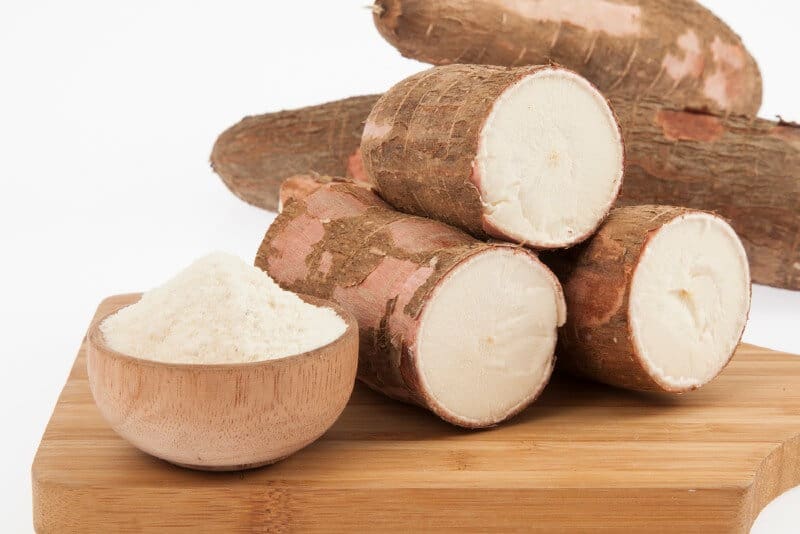
Make a semi-liquid mixture with arrowroot powder by combining one tablespoon of water with one tablespoon of arrow powder. Place your sauce on the heat and let it warm a little bit. Add your arrowroot mixture to your sauce, continuously whisking it.
Ensure you don’t add it to the hot sauce as you can ruin the texture. Let your sauce simmer for a minute. Don’t allow it to boil.
Reducing Spaghetti Sauce Like A Pro: Two Methods That I Always Use
Add A Slurry
This is another method that also doesn’t alter the flavor of the sauce. I prefer adding a slurry compared to using a roux or plain flour. A roux can be quite tricky to use for thickening sauces because its starches don’t break down, therefore, lengthening cooking time.
If you don’t cook it enough, you will be able to taste the raw flour texture. Not to mention it can slightly alter the taste of the sauce. Which means you’ll have to readjust your seasoning after adding roux.
It can also cause your sauce from being smooth to lumpy if you don’t stir it well.
Meanwhile using plain flour and adding it directly to the sauce is not advisable either. Not only that you’ll get floating bubbles of flour on the sauce, you might accidentally add too much since it’s hard to tell how much you need to add. It can also change the taste of the sauce.
A slurry is a thickening agent that is made of equal parts cornstarch and water. To make a slurry all you have to do is dissolve 1 tablespoon of cornstarch into 1 tablespoon of water. Mix it thoroughly until it’s well combined.
Then I add it to the sauce 1 tablespoon at a time. Do not pour in too much slurry in one go. It gets thicker the more it cooks and incorporates to the sauce.
I then stir the sauce continuously until I notice the change in consistency before I decide whether to add more or not.
When I get the consistency that I’m looking for, I turn the heat off and take the saucepan off the stove. The longer you cook the sauce with the slurry, the thicker it will get. You might end up with a paste rather than a sauce.
Add Mashed Veggies
This is one of my favorite methods of making spaghetti sauce thicker. I like that it improves the consistency and flavor of the sauce at the same time.
It also lets me sneak extra veggies without the picky little ones noticing (or complaining). Bonus points for additional nutrients!
It’s a quick fix and it lessens the mom-guilt of when the kids keep asking for spaghetti and I give in because it’s easy to make. It seems like a treat to them because they get tiny cut up sausages and a lot of cheese.
What they don’t know is that the sauce has veggies that they would usually cry about eating. So, mom win! 😉
So, what vegetables do I use? It depends on whatever I have available, there’s really a lot you can use. Most of the time I go with either carrots or potatoes.
I personally love adding pureed carrots because they make the sauce naturally sweeter which my kids absolutely enjoy. Not to mention it is ultra-rich with beta carotene and Vitamin A too.
Potatoes, on the other hand, are very effective in thickening the spaghetti sauce. This is because potatoes are high in starch content. They release this starch as they incorporate into the sauce thus helping improve the consistency.
Additionally, potatoes can also make the sauce slightly sweeter and even more filling.
What I like to do is puree vegetables like potatoes, onions, carrots, or celery. I start by peeling (if needed) and boiling the vegetables until they are soft enough to mash or puree.
If you want a smooth sauce without chunks, use a blender or food processor to puree them. If you want some chunks or for the sauce to have a little bite, then you can use a masher instead.
- Included: Vitamix 5200 blender motor base, 64-ounce classic container, and tamper; this kitchen blender container allows for...
- 2 HP Motor: Equipped with a high-performance motor, this countertop blender lets you say goodbye to chunky smoothies and...
- Stainless-Steel Blades: Laser-cut, stainless-steel blades can power through fibrous produce and frozen fruit, crush ice and...
Last update on 2025-11-13 / Affiliate links / Images from Amazon Product Advertising API
After pureeing the veggies that I want to use, I then add one tablespoon at a time to the sauce, mixing it and simmering it for 1 to 2 minutes to see if it’s enough to get the thickness that I want. If not, I repeat this step until it gets thicker.
I leave it to simmer for 5 to 10 minutes on low heat to let the pureed veggie marry its flavors to the sauce.
How Do You Make Spaghetti Sauce Not Watery?
If you’re using homemade pasta sauce, make sure to drain your tomatoes before adding them to the pasta. If you don’t want to alter the flavor of the sauce by adding starch, you can also let it simmer.
Leave it on very low heat for about 5 to 10 more minutes until you get your preferred consistency.
FAQS
Why Is My Spaghetti Sauce Watery?
One of the most common reasons that spaghetti sauce gets watery is when the pasta is not drained enough. Let your pasta drain until it stops steaming. The steam from freshly cooked pasta causes condensation and thus the pool of water it creates when you add the sauce.
It can also come from rinsing your pasta. It also rinses off the starch which makes it harder for the sauce to cling to the pasta.
Can I Add Flour To Thicken Spaghetti Sauce?
Yes, you can add flour to thicken spaghetti sauce, but this is not my go-to option as it tends to slightly change the taste. Better yet to make a roux or use slurry instead. 😉
The process of spaghetti sauce thickening can be tricky and you never know what you’ll come up with in the end. Moderation is the major rule to follow when adding any thickening ingredient to your sauce.
If you love tomato flavor, then you can also thicken your sauce with tomato paste, making your spaghetti more classic. It’s up to you and your family’s preferences.
Does Spaghetti Sauce Need to Be Thick?
Yes. This is in order for the sauce to cling to the pasta and hold the dish together. If the sauce is too runny or watery, it will not be as appetizing.
A thick sauce will let you have a little bit of everything with every bite. To know if the sauce is thick enough, try to part the sauce in the middle with a spoon or ladle. The sauce should slowly cover the path that your spoon has taken.
How Do You Make Spaghetti Sauce From Scratch?
First, I sauté ground beef, a clove or two of garlic, and diced onions until they’re golden brown in color. Then I add tomato paste, tomato sauce, and a teaspoon of sugar.
This is also the best time to add herbs and spices, I use Italian seasoning, oregano, parsley flakes, and salt and pepper to taste.
Leave it to simmer on very low heat for 30 to 40 minutes, stirring occasionally.
Once I’m satisfied with the consistency then I add half a cup of parmesan cheese and quick melting cheese. Give it a little stir then it’s done!
What Is The Secret Ingredient In Spaghetti Sauce?
I make my homemade spaghetti sauce using my grandma’s family recipe that’s been handed down to every generation. It’s simple but it all reminds us of home and our Nana’s warm hugs.
But since I love all of you, I will let you in on the secret ingredient to Nana’s Legendary Spaghetti Sauce:
It’s Worcestershire sauce. Yes, that sauce that only the sauce Gods know how to pronounce. Don’t ditch it until you try it!
- One 5 fl oz. bottle of Lea & Perrins The Original Worcestershire Sauce
- Lea & Perrins Worcestershire Sauce will enhance your dish and make your taste buds crave for more
- The oldest commercially bottled condiment in the United States
Last update on 2025-11-13 / Affiliate links / Images from Amazon Product Advertising API
Add about 2 tablespoons of Worcestershire sauce for every 1lb of ground meat and it would heighten up the flavor of your spaghetti sauce.
How Do You Thicken Sauce In A Slow Cooker?
There are two tried and tested ways I use to reduce sauces that I cook in my slow cooker. First is I open the lid just enough to let the steam out.
Most meats and vegetables release water or “sweat” when they are being cooked. Opening the lid allows the steam and water to evaporate.
Second is I add some type of starch. I use cornstarch most of the time because it doesn’t alter the taste of the sauce, unlike flour. Make a slurry, equal parts water, and cornstarch and stir it well.
Then gradually add it to the sauce until you get your desired thickness. Other alternatives can be arrowroot powder, roux, or mashed potatoes
How Long Should Spaghetti Sauce Cool Before Putting In Fridge?
Nana always said putting hot food in the fridge can damage it and make the food taste odd. However, I learned that letting food completely cool before putting it in the fridge can give it time for bacteria to multiply. This ultimately causes foodborne illness.
So, I decided to do a little research. Let your food cool down at room temperature for no longer than 2 hours. As soon as your food is down to 40° F, it is safe to put in the fridge.
To make the cooling process faster, divide the hot food in multiple smaller containers. Or you can put it in an ice bath.
How Long Should Spaghetti Sauce Simmer?
What I like to do when I have extra time is to leave the sauce to slowly simmer for up to 4 hours on low heat. If you’re using a slow cooker, you can simmer it for 4 to 5 hours.
Simmering brings the best out of most dishes when done right. Spaghetti sauces, for example, the longer it simmers, the better it tastes.
This helps develop the flavors of the individual ingredients, improve consistency, and marry the flavors together at the same time. Make sure to occasionally stir the sauce while simmering.
Can You Simmer Spaghetti Sauce Too Long?
Yes and no. It depends on what you’re aiming for. If you want to have a thinner, fresher tasting spaghetti sauce, leave it to slowly simmer from 30 minutes to 1.5 hours.
If you’re like me, and you want to have a thicker, richer tasting spaghetti sauce then leave it to slowly simmer for up to 4 hours on low heat.
Make sure to keep stirring it so that the sauce will not stick to the bottom of the pan. You can also adjust the seasoning as you go.
Can You Overcook Spaghetti Sauce?
Yes, if your spaghetti sauce resembles tomato paste – then you’ve overcooked it. But do not fret! As long as it’s not burnt, there’s still hope.
Add a little water and fully incorporate it into the sauce. Adjust the seasoning and let simmer for a few minutes on low until you get your desired consistency.
How to Thicken Tomato Sauce
I know you’ve been looking for ways on how to thicken the all-time classic tomato sauce, which is a reliable pantry staple. If you come here because you were searching for tips on how to thicken spaghetti sauce, then this post may help you as well.
Tomato sauce is one of the 5 French mother sauces and is the foundation of countless tomato-based recipes. Chefs and homemakers use it in many different cuisines all over the world.
However, as majestic as it sounds, tomato sauce isn’t always perfect. If you’ve ever made it from scratch you’ve probably encountered the dreaded watery tomato sauce. It usually happens when the tomatoes aren’t dried or at least drained before cooking and it releases water into the sauce.
The question is, how do you fix it?
Tried and Tested Method:
- Add tomato paste
- Use butter
- Add cheese
Add Tomato Paste
Aside from the hacks I mentioned above, adding tomato paste is best tip I could give. This is so as not to make the sauce taste “paste-y” as it is given enough time to cook with the other ingredients. Add 1 to 2 tablespoons gradually with a few minutes in between until the sauce thickens.
- Simmered with salt and natural spices, Hunt's Tomato Paste is perfect in chili, soups, and stews
- Add body to sauces with the extra-thick and rich texture, made using concentrated, strained tomatoes
- No compromise, Hunt's Tomato Paste is 100% natural, with no artificial preservatives
Last update on 2025-11-13 / Affiliate links / Images from Amazon Product Advertising API
You can use store-bought breadcrumbs. You can also make your own by toasting 2 to 3 slices of bread then process into fine crumbs. Bread naturally soak excess water so adding it to your sauce will make it thicker.
Add one tablespoon at a time as it may alter the texture of the sauce if you add too much.
Add Cheese
This is my go-to method of all time. If you’re a turophile or “cheese lover” like me, you’ll want to try this out if you haven’t already. Adding cheese to tomato sauce will make it not just thicker, but richer and creamier too.
Be careful not to add too much (as tempting as it is) because cheese is rich in sodium and can make the sauce too salty.
Add Butter
Butter can make the tomato sauce thicker and give it a silkier texture. Whisk the butter until it’s smooth and has a heavy cream-like consistency. Then add 1 tablespoon of butter for every 1 cup of sauce and stir well.
Too Watery Tomato Sauce: Follow This Video
Best Slow Cooker Spaghetti Sauce
Now that you know how to make your spaghetti and tomato sauce thicker and chunkier, let me share you my family’s all time favorite spaghetti sauce recipes. They are reduced to perfection that these are all yummy and easy to make.
Slow Cooker Bolognese Sauce
This is one of those dishes that my family loves to bond over. I would sauté onion and garlic in olive oil until they caramelize. Then I add some diced carrots and celery and cook for a few minutes.
Once they are translucent, I throw in the ground beef. Sprinkle a dash of salt and pepper to taste.
When it achieves a beautiful golden-brown color, I add the tomato paste and tomato sauce then transfer them to the slow cooker. At this point, I just set it on Low and cook for 6 to 8 hours and just hang out with the kid.
Slow Cooker Cheesy Chicken Penne
Another recipe on my easy weekend dinners is Slow Cooker Cheesy Chicken Penne.
First, I fully incorporate cream of chicken soup and chicken broth in a slow cooker. Then add chicken breasts, onions, and sliced mushrooms for 5 to 6 hours on Low setting. This is also where I add salt and pepper to taste and a couple of pinches of dried tarragon or oregano.
Once the chicken breasts are tender enough, shred them using 2 forks. Throw in sour cream and grated sharp cheddar cheese.
Stir until everything is well combined. Then add your choice of pasta and mix it again.
Slow Cooker Easy Marinara Sauce
This humble yet very versatile sauce is one of my favorites to make. I usually just make a big batch and store a few bottles for when I’m feeling lazy. 😊
I start with caramelizing onions together with dried parsley, oregano, and basil. Salt and pepper to taste. Then I add tomato paste and pour in the crushed tomatoes.
I then fill up the tomato paste can with water, swish it around to get every last drop, and empty it in the slow cooker. Lastly, I toss in a whole carrot to add flavor and leave the sauce to cook on Low for 6 to 8 hours.
Slow Cooker Chicken Parmesan Soup
As soon as we feel the weather gets even the slightest bit colder, best believe we’re having Slow Cooker Chicken Parmesan Soup for dinner.
All I do is throw everything in the slow cooker then play board games with my kids or have family movie time. Put chicken breasts, chicken broth, tomato paste, diced tomatoes, my homemade spaghetti sauce in a slow cooker then sprinkle it with salt and pepper.
Now I just leave it to cook on Low for 6 to 8 hours. Shred the chicken and toss in the pasta and voila! A meal that basically cooks itself.
Slow Cooker Baked Spaghetti
To do this, I simply sauté onions and garlic until they caramelize. Then I add the ground beef. Salt and pepper to taste, as usual.
Once the ground beef has turned from pink to brown, transfer it to the slow cooker. Now I add my homemade spaghetti sauce and a dash of dried oregano, basil, and pepper. Then I just leave it to cook on Low for about 5 to 6 hours.
Finally, you toss in the spaghetti noodles. Add a few dollops of the ricotta mixture (ricotta and cream cheese) then sprinkle with mozzarella cheese. Put the lid back on and cook for about 20 minutes or until the cheese melts.
I tried to write this gigantic guide answering all the questions that I’ve been getting from my family, friends, and readers. I hope you learned a lot and will apply some of the tips I shared here to thicken your homemade pasta sauce.

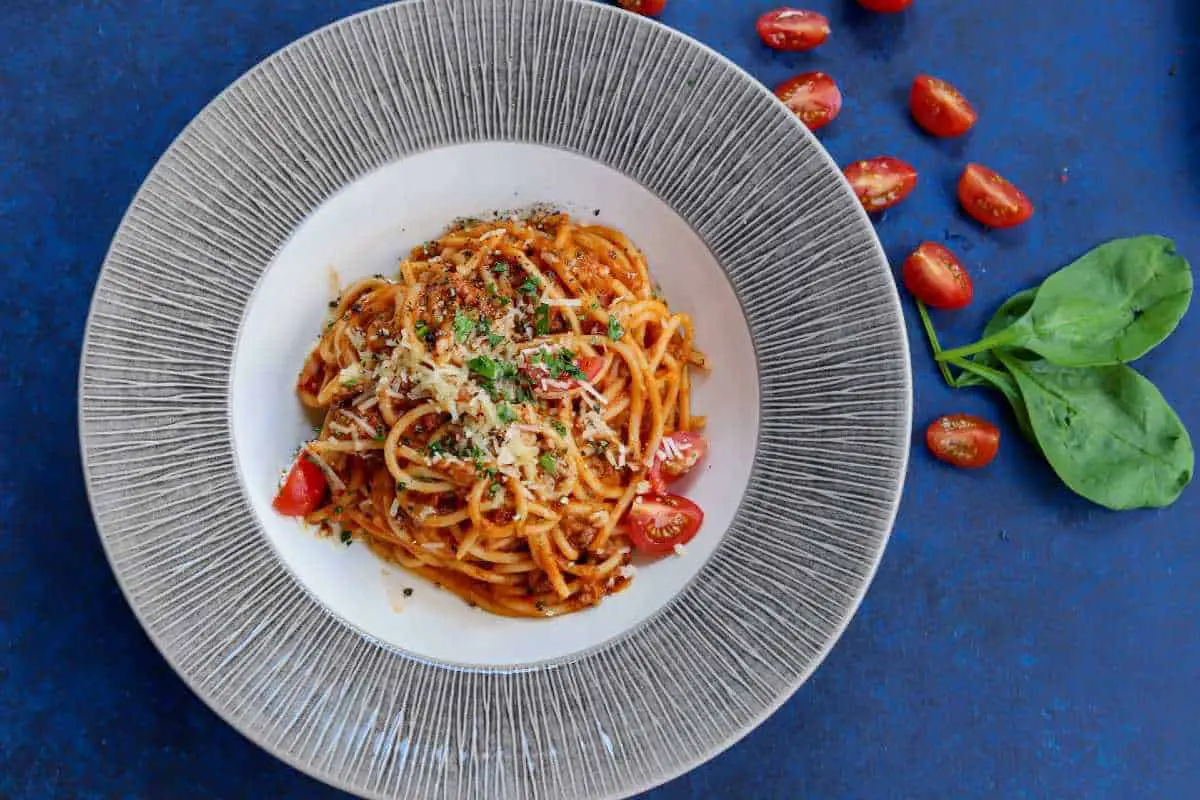
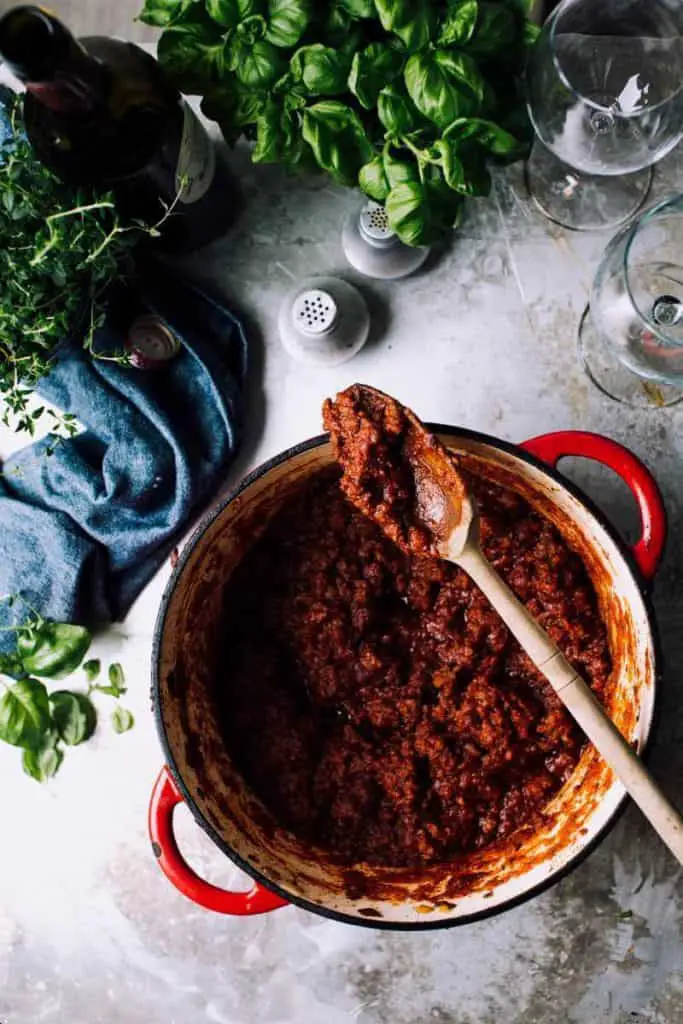

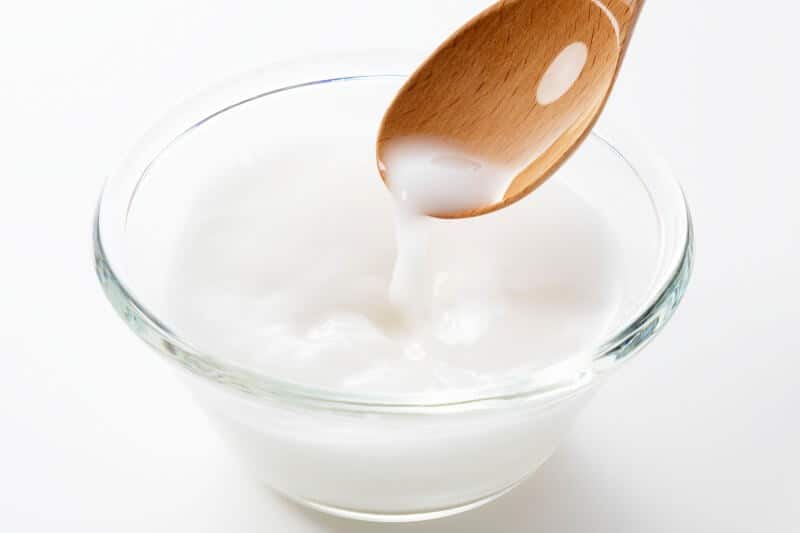
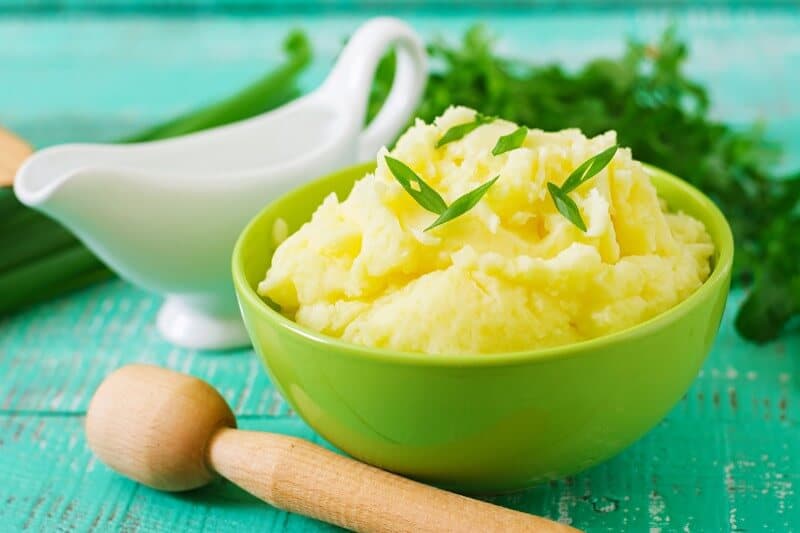
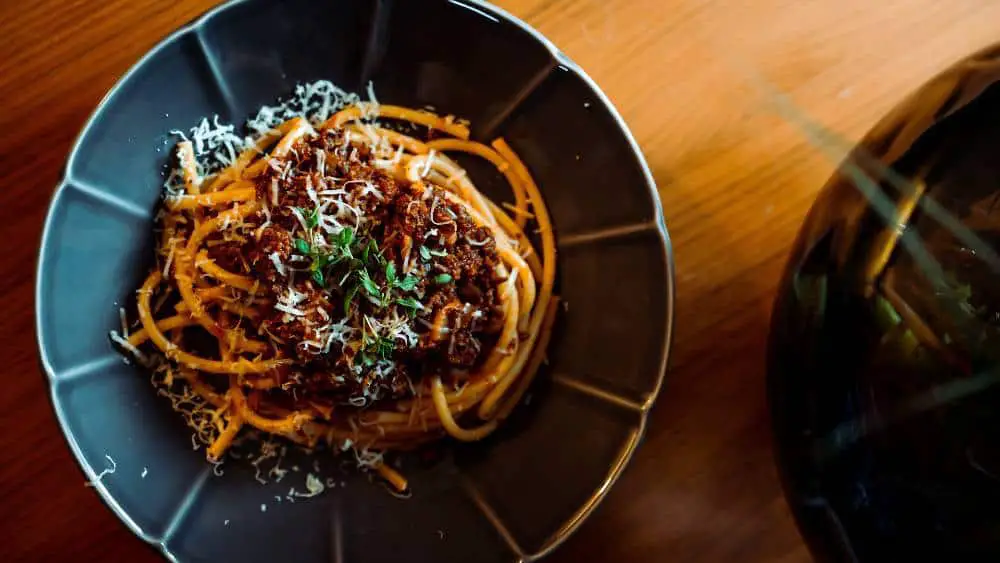

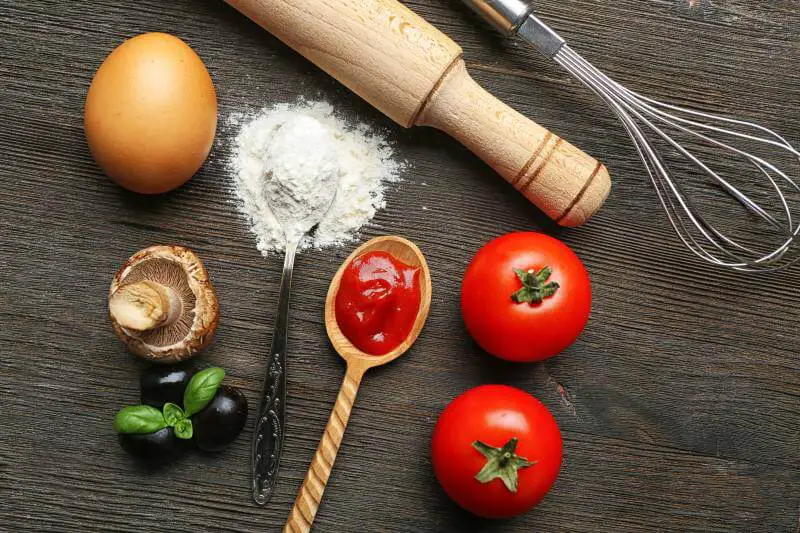

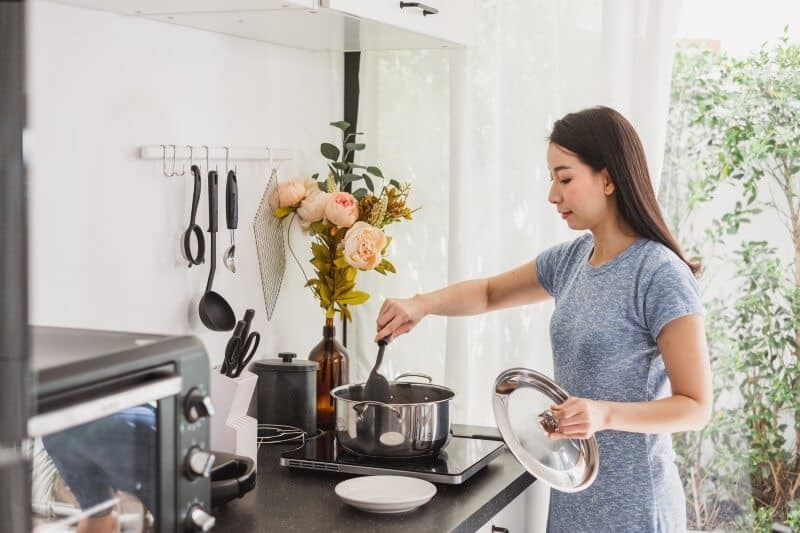
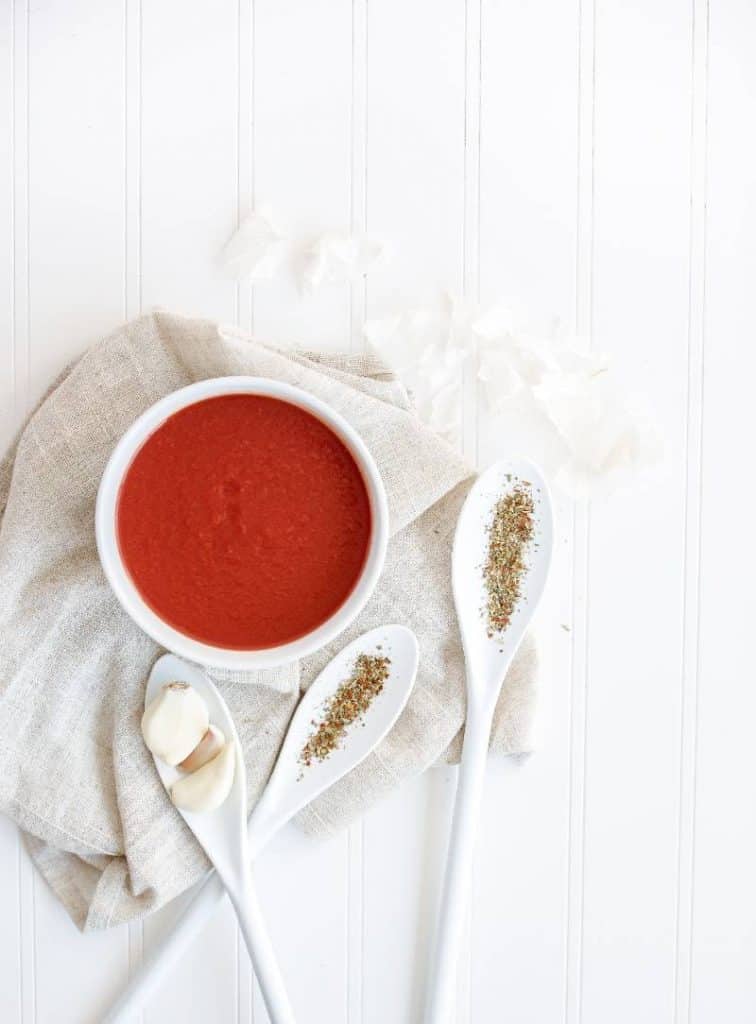

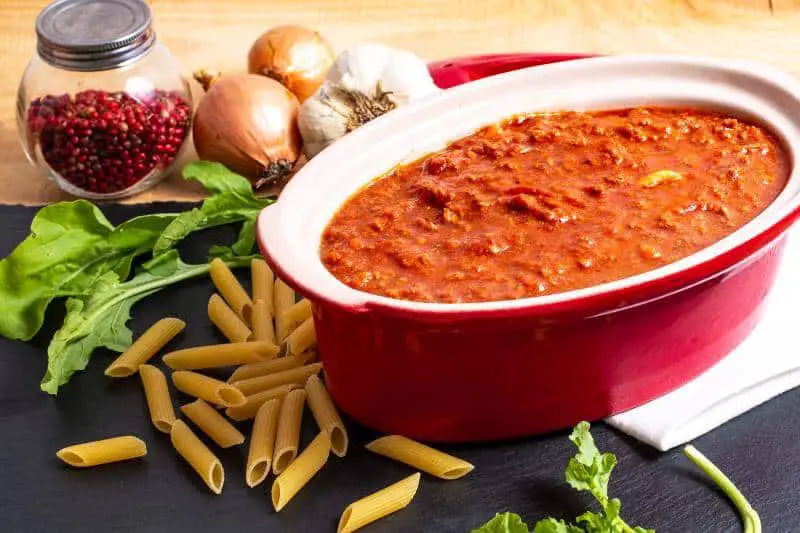

Roux in an excellent choice. Make extra roux to freeze in a freezer bag. Flatten out so you can break off pieces as needed. Cook the roux extra long so t’s a brown color for a richer taste.
Clear Gel works best to thicken spaghetti sauce, especially for canning.